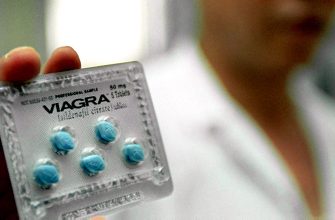Need a clearer understanding of Obagi tretinoin cream prescriptions? Start with your dermatologist. They’ll assess your skin type and concerns, determining the correct strength and application method for optimal results. This personalized approach maximizes effectiveness and minimizes potential side effects.
Expect initial dryness and irritation. However, consistent, careful application as directed by your doctor, combined with a robust moisturizing routine (consider a hyaluronic acid serum), will mitigate these. Remember to use sunscreen daily, with an SPF of 30 or higher, as tretinoin increases sun sensitivity.
Obagi offers various formulations. Your doctor will guide you towards the most suitable one based on your specific requirements. Factors influencing this choice include skin tone, existing conditions (like acne or hyperpigmentation), and your overall treatment goals. Regular follow-up appointments are critical for monitoring progress and adjusting the treatment plan if necessary.
Patience is key. Visible improvements might take several weeks, even months. Avoid impulsive changes to your routine, and maintain consistent application for best outcomes. Open communication with your dermatologist throughout the treatment ensures a positive experience and successful results.
- Obagi Tretinoin Cream Prescription: A Comprehensive Guide
- Understanding Your Prescription
- Application Techniques for Optimal Results
- Managing Potential Side Effects
- Long-Term Usage and Maintenance
- Obagi Tretinoin and Other Skincare Products
- Addressing Common Concerns
- What is Obagi Tretinoin Cream and How Does it Work?
- Obagi Tretinoin Cream: Indications and Benefits
- Who is a Good Candidate for Obagi Tretinoin Cream?
- Ideal Candidates: Specific Skin Conditions
- Who Might Not Be Suitable?
- Consultation is Key
- Potential Side Effects and Risks of Using Obagi Tretinoin Cream
- How to Apply Obagi Tretinoin Cream Correctly
- Obagi Tretinoin Cream and Sun Protection: Essential Precautions
- Understanding Sun Sensitivity with Tretinoin
- Choosing the Right Sunscreen
- Important Considerations Before Starting Tretinoin Treatment
- Obagi Tretinoin Cream and Other Skincare Products: Compatibility
- Combining with Other Active Ingredients:
- Products to Avoid Combining:
- Monitoring Your Skin:
- Important Note:
Obagi Tretinoin Cream Prescription: A Comprehensive Guide
Consult your dermatologist before starting Obagi Tretinoin. They’ll determine the correct strength and usage frequency based on your skin type and concerns. This personalized approach maximizes results and minimizes potential side effects.
Understanding Your Prescription
Your prescription will specify the tretinoin concentration (e.g., 0.025%, 0.05%, 0.1%). Start with the prescribed strength. Don’t increase the concentration or frequency of application without your dermatologist’s guidance. Consistent use is key.
Application Techniques for Optimal Results
Apply a pea-sized amount of cream to clean, dry skin at night. Avoid applying near your eyes, nostrils, and mouth. Spread thinly and evenly. Sun protection is paramount. Use a broad-spectrum sunscreen with an SPF of 30 or higher daily, even on cloudy days. Reapply every two hours, especially after swimming or sweating.
Managing Potential Side Effects
Expect initial irritation, including dryness, redness, and peeling. This is normal and usually subsides as your skin adapts. Your dermatologist might recommend using a moisturizer to alleviate dryness. If irritation is severe or persistent, contact your dermatologist immediately.
Long-Term Usage and Maintenance
Maintain regular communication with your dermatologist. They will monitor your progress and adjust your treatment plan as needed. Long-term use requires commitment, but consistent application yields visible improvements in skin texture, tone, and acne. Remember to always use sun protection.
Obagi Tretinoin and Other Skincare Products
| Product Category | Interaction with Obagi Tretinoin |
|---|---|
| Exfoliants (AHAs/BHAs) | Use cautiously, possibly on alternate nights to avoid excessive irritation. |
| Benzoyl Peroxide | May increase irritation; consider alternating application times. |
| Other Retinoids | Avoid concurrent use; consult your dermatologist. |
Addressing Common Concerns
If you experience significant dryness or irritation, consider reducing the frequency of application or using a gentler moisturizer. Avoid harsh scrubs or abrasive cleansers. If you’re pregnant or breastfeeding, inform your dermatologist before starting treatment.
What is Obagi Tretinoin Cream and How Does it Work?
Obagi Tretinoin Cream is a prescription retinoid, a vitamin A derivative. It works by increasing cell turnover, leading to smoother, clearer skin. This accelerated cell regeneration helps reduce acne breakouts by preventing pores from clogging.
Specifically, tretinoin targets acne by reducing inflammation and unclogging pores. It also improves the appearance of wrinkles and sun damage by stimulating collagen production and increasing skin thickness.
The cream’s effects aren’t immediate; you’ll likely notice gradual improvements over several weeks. Consistent application is key. Start with a small amount, applying it once or twice a week, gradually increasing frequency as tolerated. Always follow your dermatologist’s instructions.
Common side effects include dryness, redness, and peeling. These typically lessen as your skin adjusts. Use a moisturizer and sunscreen daily to mitigate these side effects and protect your skin from sun damage, which tretinoin can make it more susceptible to.
Obagi offers various formulations of tretinoin cream with varying concentrations. Your dermatologist will determine the best strength for your skin type and concerns. They can also advise on proper application techniques and address any questions or concerns you may have.
Obagi Tretinoin Cream: Indications and Benefits
Obagi Tretinoin Cream, a retinoid, tackles various skin concerns. It’s prescribed to treat:
- Acne vulgaris: Reduces inflammation and unclogs pores, preventing future breakouts. Expect improved skin texture and reduced acne severity with consistent use.
- Fine lines and wrinkles: Stimulates collagen production, leading to smoother, firmer skin and a reduction in the appearance of wrinkles. Results are gradual but noticeable over time.
- Hyperpigmentation: Reduces the appearance of age spots, sun spots, and melasma by promoting cell turnover and fading dark patches. Patience is key; significant improvement takes several months.
Beyond these primary uses, you may also see:
- Improved skin tone and texture
- Reduced pore size
- Enhanced skin radiance
Remember, individual results vary. Consistent application is vital. Always follow your dermatologist’s instructions regarding dosage and frequency. They will guide you through potential side effects and how to manage them.
Before starting treatment, discuss any allergies or pre-existing skin conditions with your doctor. Also, ensure you understand the importance of sun protection while using tretinoin, as it can increase sun sensitivity. Use sunscreen with an SPF of 30 or higher daily.
- Start with a low concentration and gradually increase as tolerated.
- Apply a pea-sized amount to clean, dry skin at night.
- Be patient; noticeable results may take several weeks or months.
Who is a Good Candidate for Obagi Tretinoin Cream?
Obagi Tretinoin is ideal for individuals with acne, particularly those with moderate to severe cases unresponsive to other treatments. It’s also a great option for those seeking to improve skin texture and reduce the appearance of fine lines and wrinkles. However, considerations exist.
Ideal Candidates: Specific Skin Conditions
Patients with acne vulgaris, including inflammatory and non-inflammatory types, often benefit significantly. Likewise, those with hyperpigmentation (dark spots from sun damage or acne) may see improvement. Obagi Tretinoin can also address photoaging, characterized by wrinkles, rough texture, and uneven skin tone.
Who Might Not Be Suitable?
Pregnant or breastfeeding individuals should avoid tretinoin due to potential risks to the fetus or infant. Those with extremely sensitive skin or a history of severe skin reactions to retinoids may experience increased irritation. Individuals with eczema or rosacea should proceed with caution and under strict dermatological supervision.
| Skin Condition | Suitability | Precautions |
|---|---|---|
| Acne (moderate to severe) | Excellent | Start with a low concentration |
| Hyperpigmentation | Good | Use sunscreen diligently |
| Fine lines and wrinkles | Good | Combine with other anti-aging products |
| Eczema or Rosacea | Poor (unless under strict medical supervision) | Potential for exacerbation |
| Pregnancy/Breastfeeding | Not recommended | High risk to the fetus/infant |
Consultation is Key
Before starting Obagi Tretinoin, a consultation with a dermatologist is crucial. They will assess your skin type, condition, and medical history to determine suitability and recommend the appropriate concentration and usage regimen. This ensures safe and effective treatment.
Potential Side Effects and Risks of Using Obagi Tretinoin Cream
Obagi Tretinoin cream, while effective, carries potential side effects. Understanding these is key to safe and successful use.
Expect initial irritation. This commonly includes dryness, redness, peeling, and burning. These usually lessen as your skin adjusts, typically within a few weeks. However, if irritation persists or worsens, reduce application frequency or temporarily discontinue use, consulting your dermatologist.
- Sun sensitivity: Tretinoin makes your skin much more vulnerable to sun damage. Daily, broad-spectrum sunscreen with an SPF of 30 or higher is mandatory. Avoid prolonged sun exposure, especially during peak hours.
- Increased sensitivity: Your skin might become more sensitive to other products or environmental factors. Avoid harsh scrubs, fragrances, and strong chemicals. Gentle cleansers are recommended.
- Purging: You might experience a temporary increase in acne breakouts initially. This “purging” is different from a true allergic reaction and usually subsides as your skin adapts.
- Hyperpigmentation or Hypopigmentation: In some cases, tretinoin may cause temporary darkening (hyperpigmentation) or lightening (hypopigmentation) of the skin. This is more common in individuals with darker skin tones.
- Rare but serious side effects: While uncommon, severe reactions like allergic contact dermatitis are possible. Stop using the cream immediately and seek medical attention if you experience symptoms such as severe swelling, blistering, or difficulty breathing.
- Start slow: Begin with a low concentration and apply less frequently than prescribed initially. Gradually increase frequency and concentration as tolerated, following your dermatologist’s instructions.
- Moisturize: Use a gentle, fragrance-free moisturizer daily, especially at night, to counteract dryness.
- Be patient: Results take time. Don’t expect immediate improvements. Consistency is crucial for achieving your desired outcome.
- Follow your dermatologist’s instructions precisely: This is paramount for minimizing risks and maximizing benefits. Always discuss any concerns with your doctor before making changes to your treatment plan.
Remember, this information is not a substitute for professional medical advice. Always consult your dermatologist before starting any new skin care regimen, especially one involving prescription medications.
How to Apply Obagi Tretinoin Cream Correctly
Wash your face gently with a mild cleanser and pat it dry. Avoid harsh scrubbing.
Wait 20-30 minutes after cleansing before applying the cream. This allows your skin to fully dry, preventing irritation.
Use a pea-sized amount of Obagi tretinoin cream for your entire face. Less is more; you can always add more later, but you can’t take it away.
Apply the cream evenly across your face, avoiding the eyelids and the delicate skin around your eyes and mouth.
Gently massage the cream into your skin using your fingertips until it’s fully absorbed. Don’t rub vigorously.
Apply Obagi tretinoin cream only at night. Sun exposure increases the risk of sunburn and irritation while using tretinoin.
Always use a broad-spectrum sunscreen with an SPF of 30 or higher during the day, even on cloudy days. This protects your skin from sun damage, a key factor in successful tretinoin use.
Start with applying the cream every other night for the first few weeks, then gradually increase the frequency as tolerated by your skin. Listen to your skin; if it’s irritated, reduce application frequency.
Expect some initial dryness, peeling, or redness. This is normal. If irritation becomes severe or persistent, consult your dermatologist.
Store the cream in a cool, dry place away from direct sunlight.
Obagi Tretinoin Cream and Sun Protection: Essential Precautions
Apply a broad-spectrum sunscreen with an SPF of 30 or higher daily, even on cloudy days. This protects your skin from the sun’s harmful UVA and UVB rays, which can worsen tretinoin’s side effects like redness and sun sensitivity.
Understanding Sun Sensitivity with Tretinoin
Tretinoin increases your skin’s sensitivity to sunlight. This means you sunburn more easily and are at a higher risk of sun damage, including premature aging and skin cancer. Reapply sunscreen every two hours, especially after swimming or sweating.
Choosing the Right Sunscreen
Select a sunscreen that’s lightweight and non-comedogenic (won’t clog pores), to avoid irritation. Consider mineral sunscreens containing zinc oxide or titanium dioxide, as these are generally well-tolerated by tretinoin users. Avoid fragrances and other potential irritants.
Wear protective clothing, including wide-brimmed hats and sunglasses, when spending time outdoors, providing an extra layer of defense against the sun.
Important Considerations Before Starting Tretinoin Treatment
Consult your dermatologist. They will assess your skin type, concerns, and medical history to determine if tretinoin is right for you and to establish a safe and effective treatment plan. This includes discussing potential side effects and interactions with other medications.
Start slowly. Your dermatologist will likely recommend beginning with a low concentration and applying it infrequently. Gradually increase the frequency and concentration as your skin tolerates it. This minimizes irritation and allows your skin to adjust.
- Sun protection is paramount. Use a broad-spectrum sunscreen with an SPF of 30 or higher daily, even on cloudy days. Tretinoin significantly increases sun sensitivity.
- Moisturize regularly. Tretinoin can dry your skin. Use a gentle, fragrance-free moisturizer, ideally one formulated for sensitive skin, both morning and night.
- Avoid harsh ingredients. While using tretinoin, limit the use of other potentially irritating products, such as strong exfoliants or products containing alcohol or fragrances. These can exacerbate dryness and irritation.
- Expect initial irritation. Some redness, peeling, and dryness are common, especially in the beginning. These side effects usually subside as your skin adapts. However, if irritation is severe or persistent, contact your dermatologist.
- Consistency is key. Results take time. Be patient and consistent with your treatment. Don’t expect overnight miracles. Consistent application over several weeks or months is necessary to see significant improvements.
- Nighttime application is generally preferred. This minimizes sun exposure during the day while tretinoin is on your skin.
Be aware of potential interactions with other skincare products. Some ingredients may interfere with tretinoin’s effectiveness or increase the risk of irritation. Always inform your dermatologist of all skincare products you are using.
Obagi Tretinoin Cream and Other Skincare Products: Compatibility
Always introduce new products gradually to avoid irritation. Start by using Obagi Tretinoin cream every other night, then increase frequency as tolerated.
Combining with Other Active Ingredients:
Retinoids and AHAs/BHAs: Combining tretinoin with other exfoliants like AHAs (glycolic acid, lactic acid) or BHAs (salicylic acid) increases peeling and irritation risk. Use them on alternate nights or alternate days. If irritation occurs, stop using one product temporarily.
Retinoids and Vitamin C: Vitamin C can be used with tretinoin, but apply Vitamin C in the morning and tretinoin at night. Some formulations may cause slight irritation when used together, so monitor your skin’s reaction closely.
Retinoids and Moisturizers: Use a hydrating moisturizer daily, especially during the initial stages of tretinoin use, to counteract dryness. Apply moisturizer after tretinoin has fully absorbed. Consider a ceramide-rich moisturizer for added protection.
Products to Avoid Combining:
Strong Exfoliants: Avoid using strong chemical peels or scrubs alongside tretinoin. This combination can significantly increase skin sensitivity and irritation.
Fragranced Products: Avoid products containing fragrances or essential oils, as these can irritate already sensitive skin. Choose fragrance-free versions of your other skincare products.
Benzoyl Peroxide: Although both target acne, combining benzoyl peroxide and tretinoin may increase dryness and irritation. Use them on alternating days or with a significant time gap between applications.
Monitoring Your Skin:
Closely observe your skin’s reaction to any new combination of products. If you experience excessive redness, burning, peeling, or discomfort, discontinue one of the products and consult your dermatologist.
Important Note:
Consult a dermatologist before combining Obagi Tretinoin with any other skincare products, particularly if you have sensitive skin or pre-existing skin conditions. Your dermatologist can provide personalized recommendations based on your skin type and needs.






